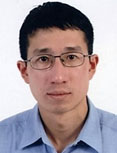Dr Andrew Tan Yong Yi
 Andrew Tan Yong Yi
Andrew Tan Yong Yi
Assistant Professor, Department of Physiology
Yong Loo Lin School of Medicine
Tel: 6516 5955
Email: phstya@nus.edu.sg
What are your present research interests or distinctive viewpoint to your research?
I study the central auditory system and is interested in how neural connectivity and its plasticity enables us to process complex sounds such as speech and music.
What do you see as your future research directions?
I hope to have a better understanding of plasticity can be harnessed to help people more quickly acquire skills, as occurs when deaf people understand speech via cochlear implants, and when movement and language abilities are rehabilitated after stroke. I have been a proponent of whole-cell intracellular recordings in living animals, publishing the first full profiles of tone-evoked excitation and inhibition in single auditory cortex neurons. Those studies laid foundations for important work by others, such as the observation of changes in excitation and inhibition during cholinergic plasticity in vivo (Froemke et al, Nature, 2007).
Does your laboratory have a particularly strong research expertise?
More recently, I have co-initiated the first successful whole-cell study of the behaving monkey. This data has been used as an example of sparklines in Edward Tufte’s “Beautiful Evidence”.
Recent Publications
1. Zhang LI, Tan AY, Schreiner CE, Merzenich MM. Topography and synaptic shaping of direction selectivity in primary auditory cortex. Nature 424:201-205, 2003
2. Tan AY, Wehr M. Balanced tone-evoked synaptic excitation and inhibition in mouse auditory cortex. Neuroscience 163:1302-1315, 2009.
3. Tan AY, Brown BD, Scholl B, Mohanty D, Priebe NJ. Orientation Selectivity of Synaptic Input to Neurons in Mouse and Cat Primary Visual Cortex. J Neurosci 31:12339-12350, 2011.
4. Tan AY, Andoni S, Priebe NJ. A spontaneous state of weakly correlated synaptic excitation and inhibition in visual cortex. Neuroscience 247:364-375, 2013.
5. Tan AY, Chen Y, Scholl B, Seidemann E, Priebe NJ. Sensory stimulation shifts visual cortex from synchronous to asynchronous states. Nature 509:226-229, 2014.

